Lisbon was our base, and there is lots to see and do in and around the city, but we also decided a day trip to Peña Palace on Sintra mountain would be interesting.
I set out early, as I had to trek up to the top of our hill, then over and down another funicular path to the rendezvous point (outside Armani Exchange) to meet the small group tour minibus run by Lisbon Riders. I arrived a little early and there was no sign of anyone. Eventually people gathered. Some got confused and headed off to wait somewhere else just before our guides arrived and wondered where everyone was. Our group of 7 was assembled, we hopped in a 9 seater van and we headed out.
Lisbon, like all cities waking up in the morning is a bit of a tangle, and our guide skilfully navigated terrifying traffic, slip ways and freeways out of the city towards the distant mountains. It was a warm day again in the city, but I packed a woolly vest just in case, and am so glad I did. Our first destination was part way up the mountain range to the quaint little town of Sintra. As we headed for the hills we could see clouds forming, explained as Atlantic Ocean breezes condensing as they pushed up and over the range, we were warned about the sudden temperature changes ahead. Most of the tour group were in tshirts and shorts. The cold shock as we got out to sightsee was obvious.
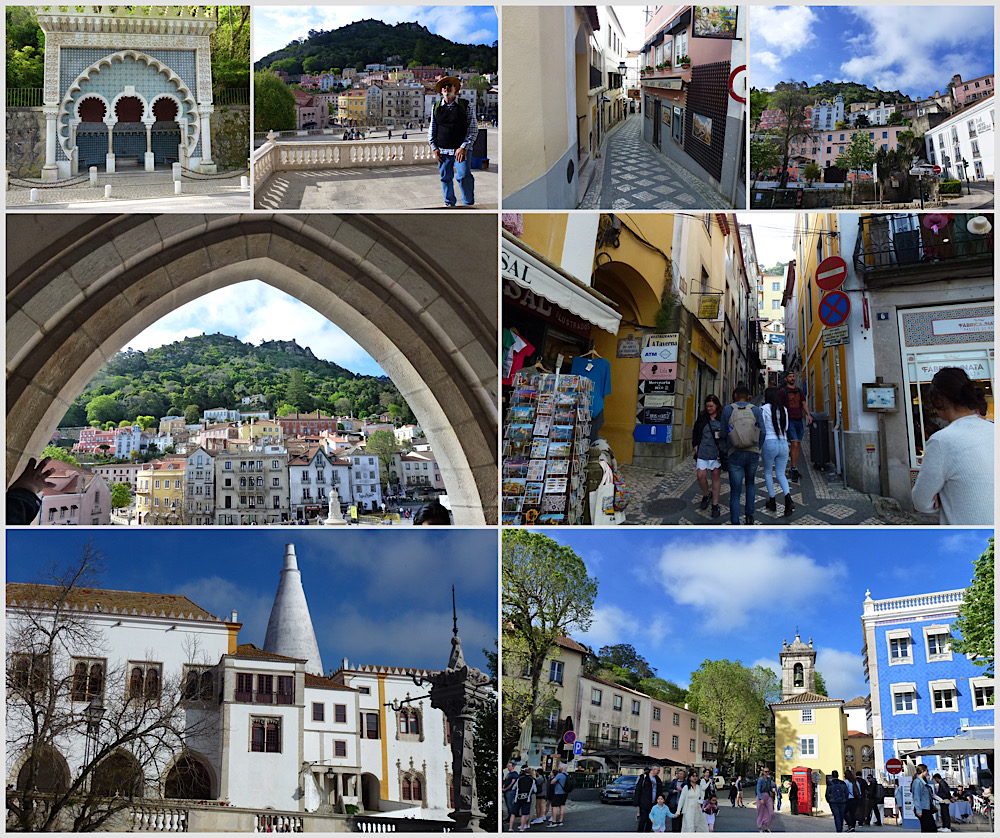
Sintra township is dominated by a summer palace, favoured by royalty as a cooler place to retire to in the heat of summer. Grand buildings, kitchens topped with odd conical chimneys apparently modelled after Tagines (moorish cooking pots).
We were given some free time to explore, I sought out a little shop called La Piroqueeta (small angry woman, apparently) for some of the regional specialty pastries- “Pillows”, which were flaky pastry bundles filled with various fillings. I chose the traditional, which was almond, egg and sugar (a little like almond pastry cream), ate one and packed some to bring home for supper. Light and delicious as morning tea.
After a good look around, we got some history of the place, and had pointed out the moorish fortifications higher up, before we headed down the other side of the range towards the western coast of Portugal.
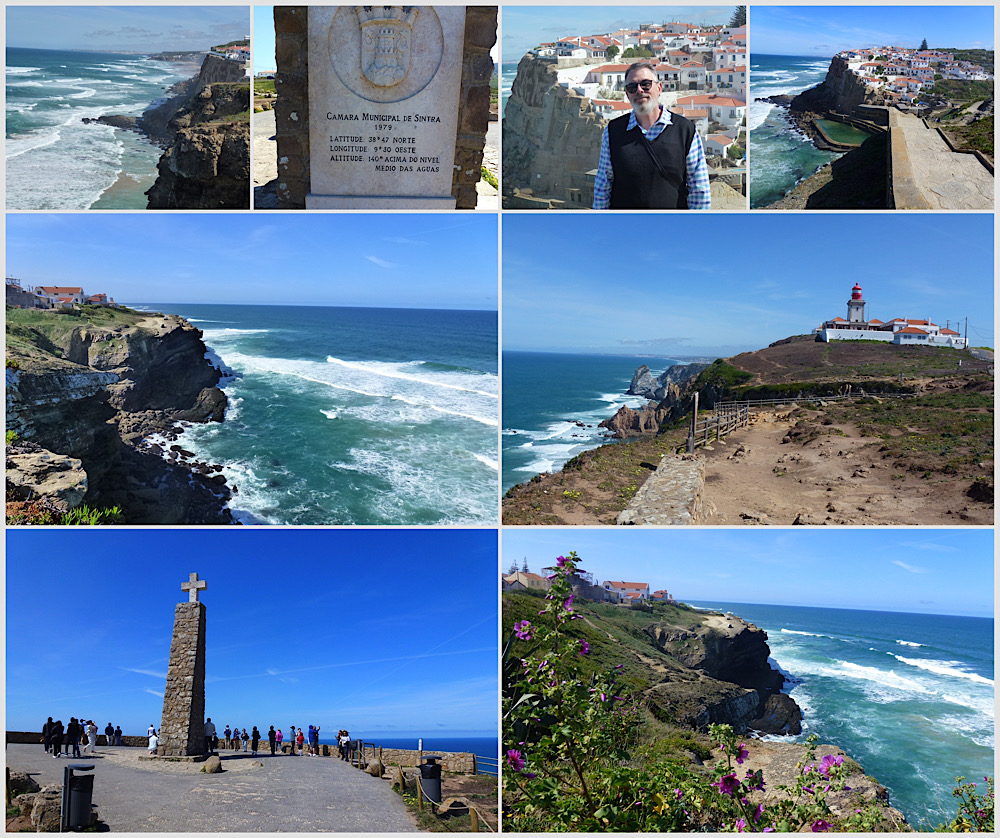
Fairly soon we were driving atop cliffs facing the Atlantic Ocean. Rugged coastline and brisk lazy winds lashed us at a lookout overlooking a small fishing village. Apparently this is a much sought after summer holiday destination – so popular that the old royal family built a private tramway so they could bathe and take in the sun, which further ostracised them from their subjects as they were not allowed to use the tram, well at least not until after the revolution.
Thoroughly chilled, we hopped back in the van and headed to the western-most point of continental Europe. Marked with a cross and a latitude/longitude survey plaque, the point, complete with working lighthouse was pretty bleak and exposed. Heading out into the ocean from here you would find no land until you bumped into North America, a staggeringly large stretch of ocean.
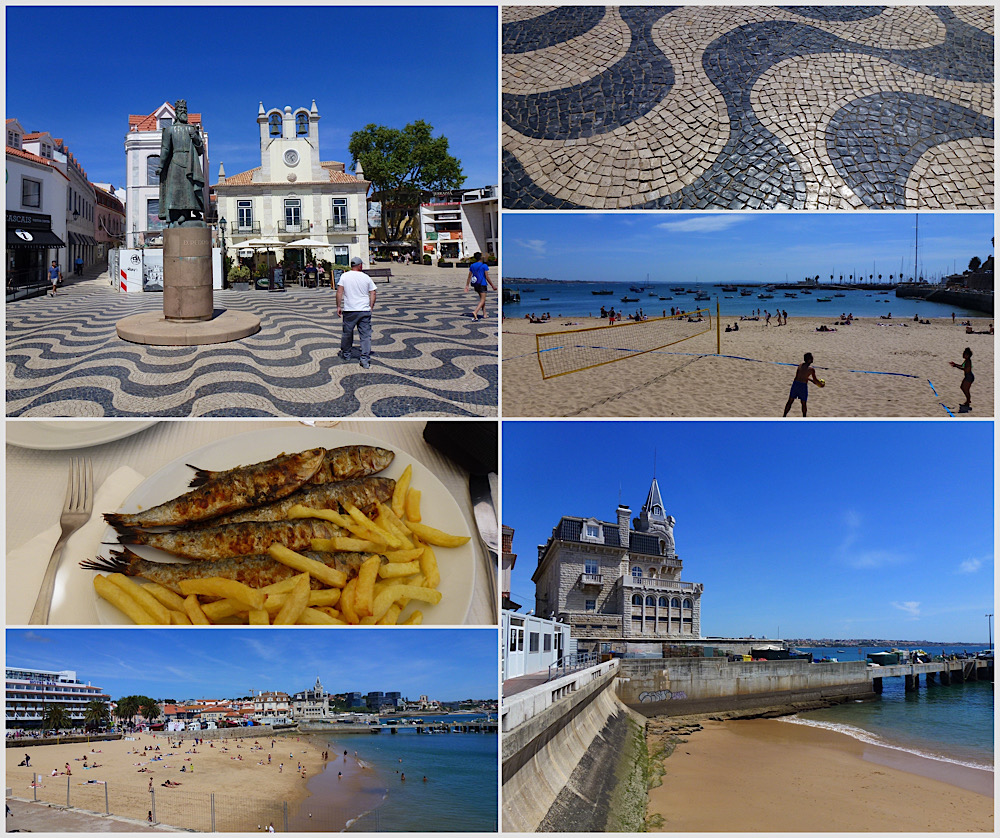
Back in the van and we headed to the coastal resort town of Cascais. Sunny, warm and lined with beaches, Cascais is apparently called the Portuguese Riviera. We were given some free time to explore and find lunch. After a ramble through the tourist areas, I returned to a traditional charcoal grill and was determined to try grilled sardines. All the canned sardines we had in Lisbon were wonderful, and everyone was raving about fresh ones, so I though it worth a try. Although not yet sardine season (they limit harvest to a narrow time of the year to protect stocks), most restaurants still offer them, having them snap frozen for storage. I had seen a travel show demonstration on how to eat them, by removing the head and then prying one side of the flesh off the backbone, then pulling the backbone out by the tail to reveal the other fillet. That technique worked a treat and I enjoyed the fish a lot, without being bothered by the hundreds of small bones. My childhood memories of those tiny, fishy, stinky oily tinned fish was so far away from this reality. A local beer to refresh and I was ready for more exploring.
After lunch, we were picked up again and we headed back towards Sintra Mountain and Peña Palace. The drive up into the Peña Palace estate (a huge planted garden that surrounds the palace) was tortured and slow, packed with tourists determined to get in due to industrial action closing it for the previous 4 days. We parked and then, together as a group, rushed to the entry gate as we had timed entry tickets, which this time got us in front of the vast lines of people who had just bought tickets.
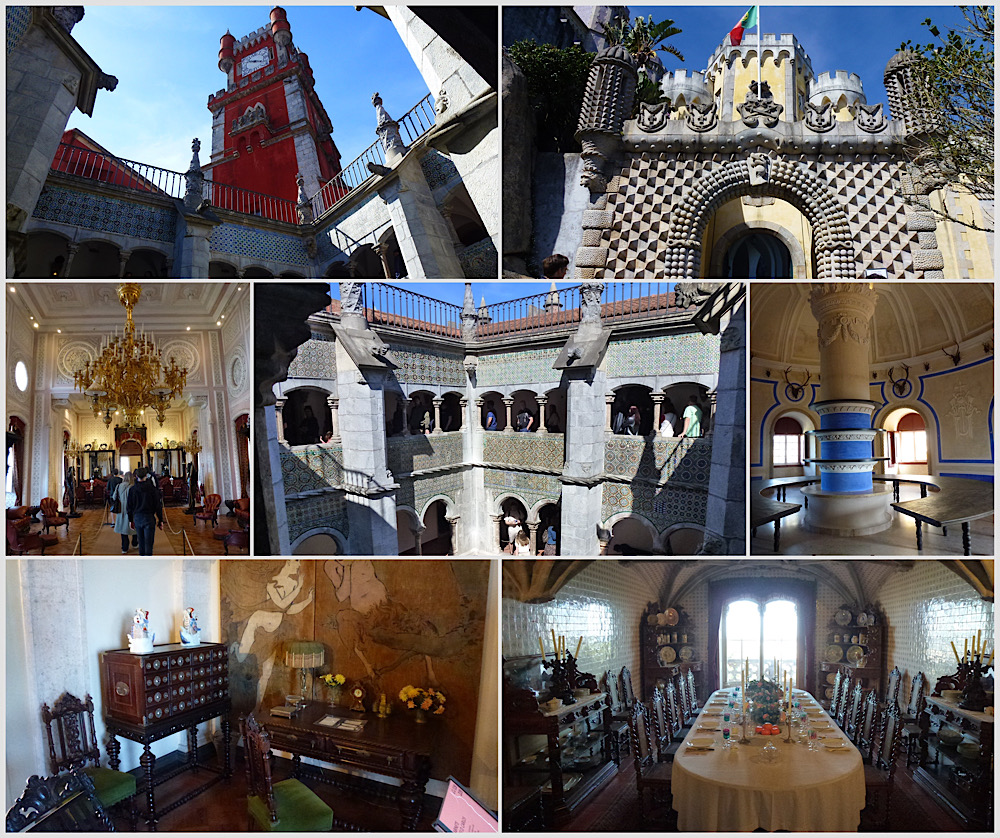
Peña Palace was the personal summer house art project of King Ferdinand II, known as the artist king. He “appropriated a monastery which dominated the hilltop, demolished some and used the rest as foundations and walls of his new summer palace. The palace itself took 7 years to build, a total of 22 years to finalise the gardens and surrounds, and is described as “romantic” architecture- being a mixture of Moorish, Gothic, Indian and the same art style as we found in the Monastry at Belem.
Although not a defensive castle, it has many of the features of one, including fortifications, convoluted entranceways, murder holes, turrets and large imposing doors, as well as the folly of a working drawbridge.
Inside is opulence in overload, with various parts of the palace dedicated to Ferdinand’s collection of wives, children etc. it was fully furnished with period pieces, but there were a few original pieces also to demonstrate the over the top ornate decoration. You got a sense of how the palace worked as both a political seat of power, and a family holiday home.
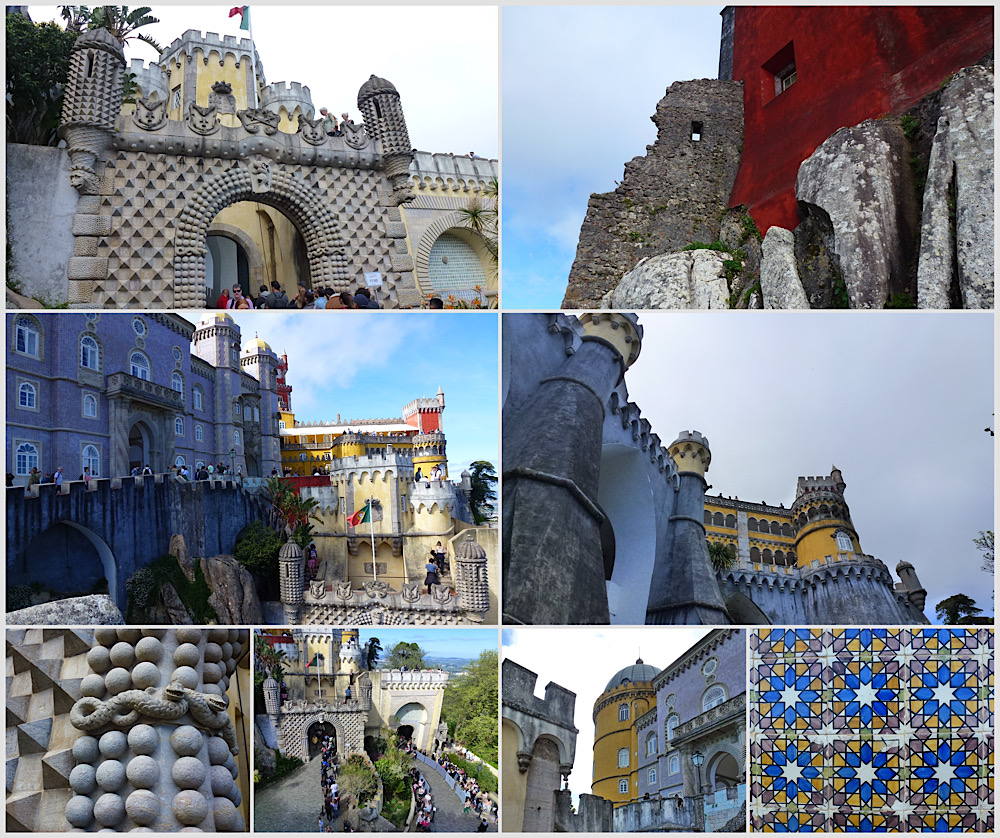
We explored the inside first (the “museum”), and then wended around the turrets and battlements, porticos and enclosed courtyards. Strong colours decorate separate sections of the palace and, although they are modern repainting, they follow the pigments found in restoration work. Had we more time (like the WHOLE day there) it would have been interesting to walk the gardens – vast tracts of beautiful plantings of a botanical garden made to look like native forest.
Tired and shagged out, we staggered back to the van and headed back to our original pickup point. The visit was fabulous, such lovely things to see and such a change from Lisbon City.

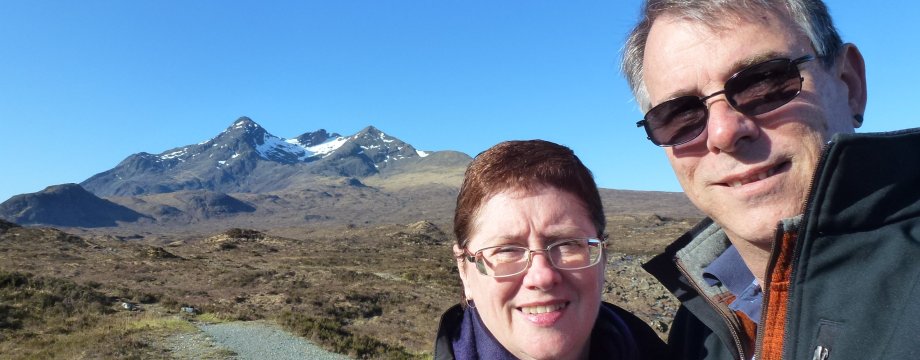
2 Responses to Day trip to Sintra and Cascais